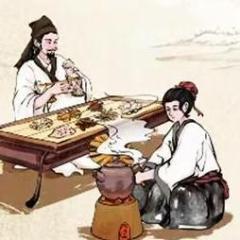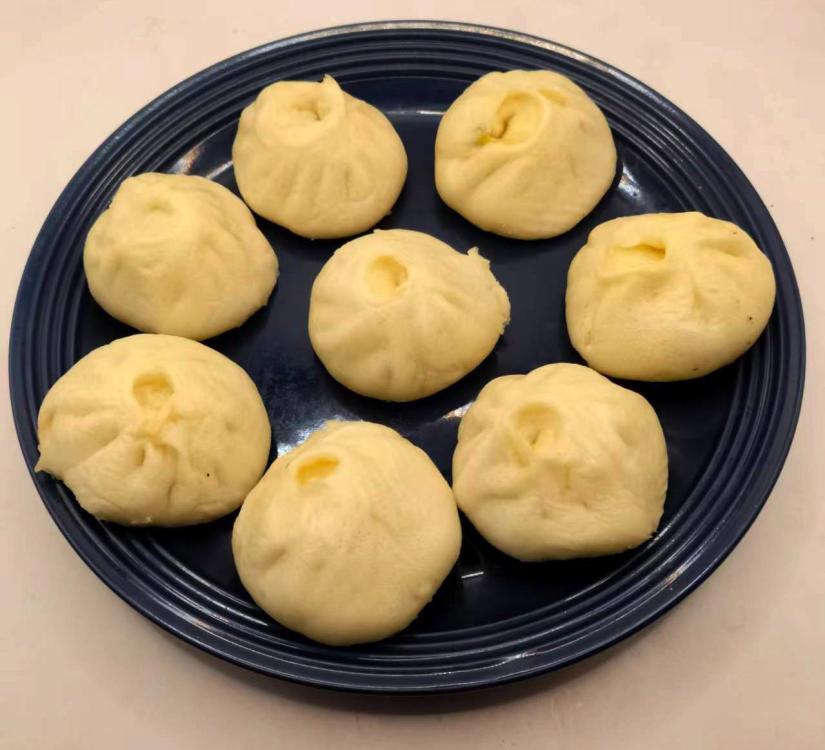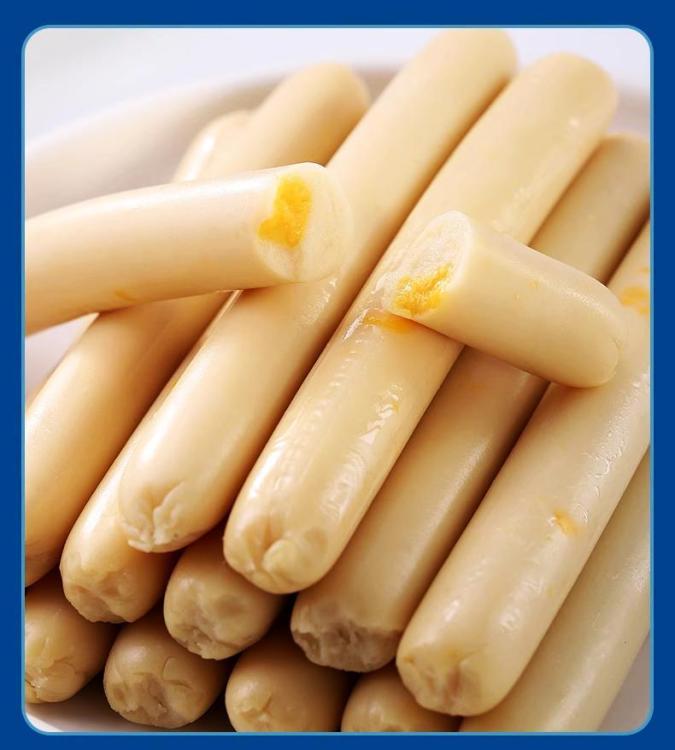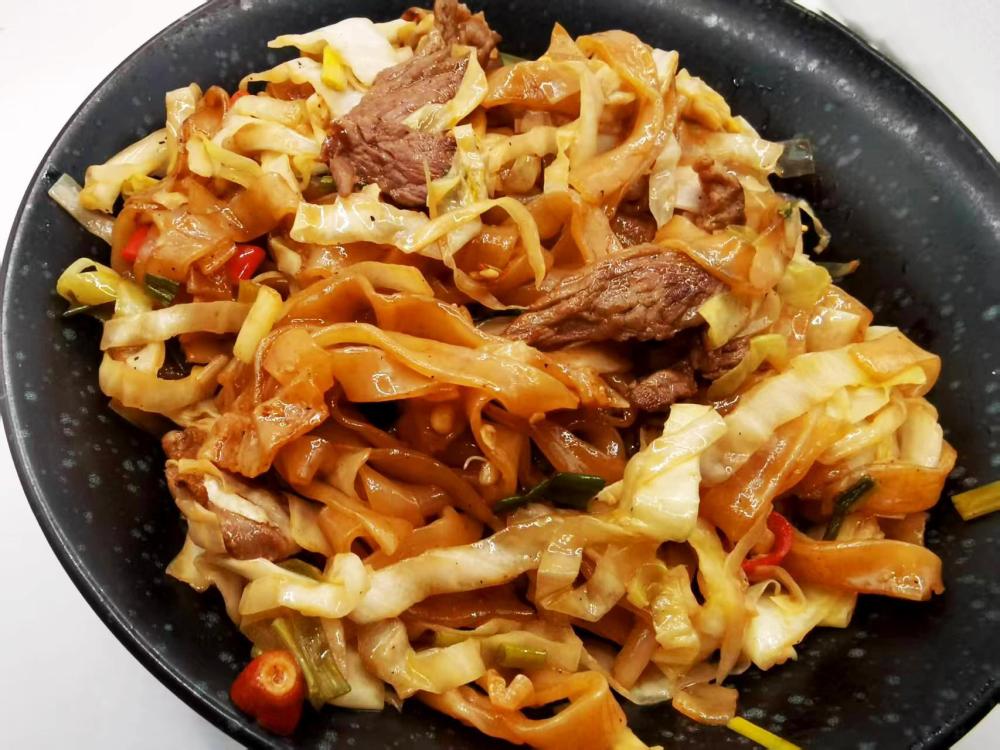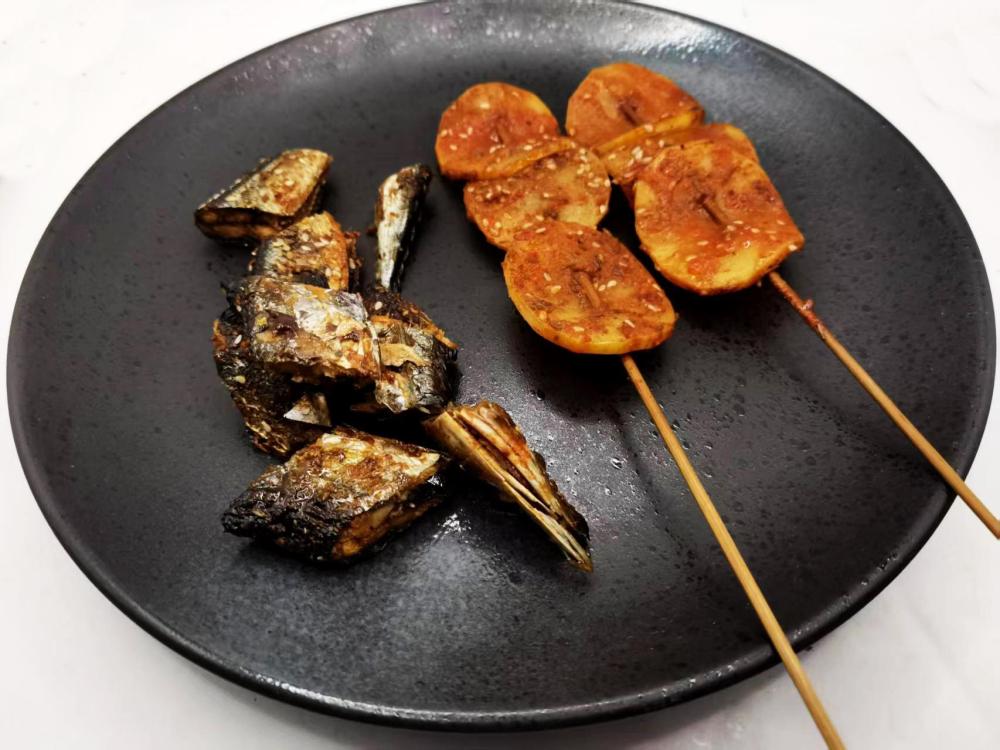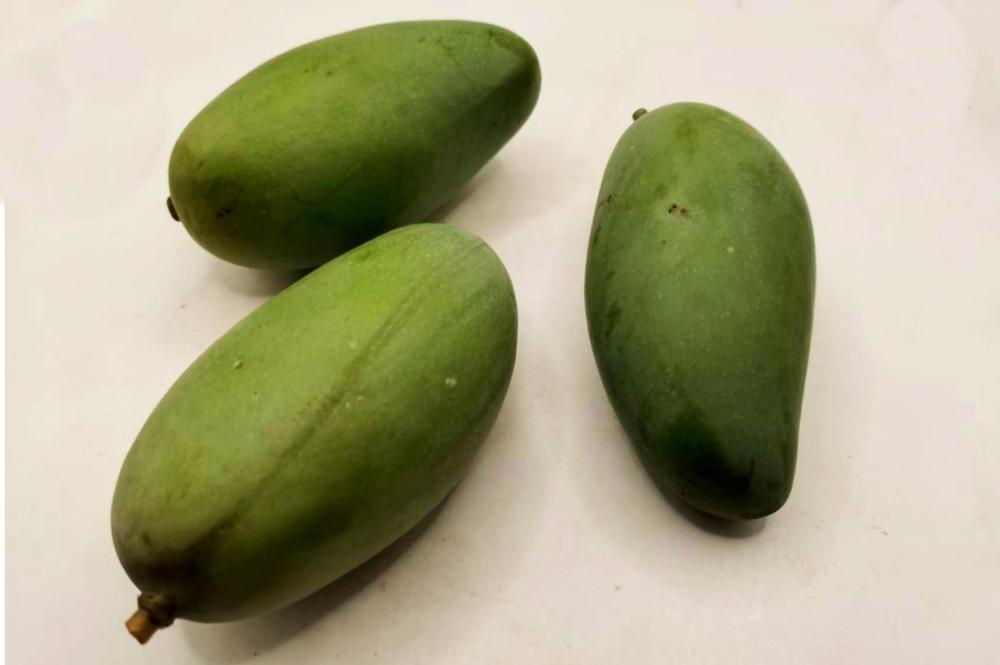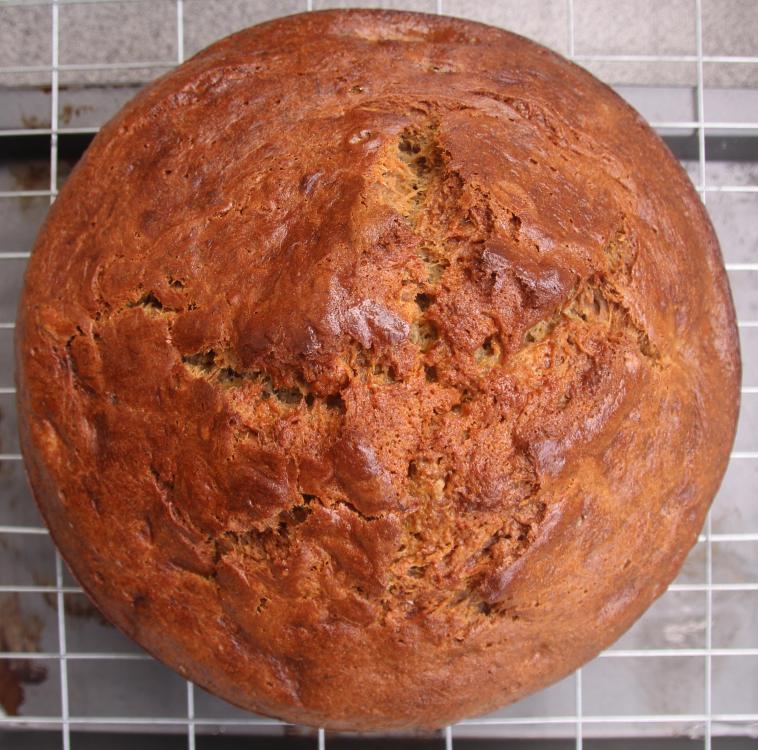-
Posts
16,725 -
Joined
-
Last visited
Content Type
Profiles
Forums
Store
Help Articles
Everything posted by liuzhou
-
No. Most XLB aren't. Soup filled are more correctly called "汤包 (tāng bāo, literally 'soup buns').“ I wrote more about this here.
-
Home made 小笼包 (xiǎo lóng bāo), Xiaolongbao. Served with a soy sauce and Zhenjiang black vinegar dip. Usually served in eights, that being Chinese culture's luckiest number.
-
I often miss Anna. I looked at the Saving Thyme menu and saw the first item Breakfast Sandwich • 9.5 soft poached, bacon, aged white cheddar, cayenne aioli • add avocado 3.5 My old eyes missed the comma after 'poached' and I thought for a moment they were offering 'soft poached bacon'! I was just about to ask what the hell that is when the fog cleared and it clicked. The joys of decrepitude!
-
For some reason, a lot of the dried pasta here comes from Turkey. Not bad; not great. I do look for Italian but it's not always clear.
-
That's interesting. I've never had phở served that way in a restaurant in Vietnam, but for delivery or take away it certainly makes sense. Perhaps, it's because in Vietnam phở is always made to order.
-
I eat my soup with chopsticks! Seriously. The local way is to pick out any solids with your chopsticks, then pick the bowl up and drink the liquid part. I haven't seen a soup spoon in 30 years. 🥢
-
I can get a lot of different fish and seafood sausages here. Cod, cuttlefish, squid spring to mind. They all also contain pork and its fat. Cod Sausages I never buy them. I prefer my fish and seafood never to be sausaged!
-
Duh! It gets worse! I'm an idiot. The Chinese for 'fig' is 无花果 (wú huā guǒ) which literally means 'no flower fruit'. Reminder to self: Don't post before your second coffee of the morning.
-
I'm clearly fig ignorant. The only figs we get here are dried. I've never bought them. They're usually used in Traditional Chinese Medicine (TCM).
-
Digging around has revealed that there is something called "fig honey", but it isn't honey at all and not made by bees, but people. It's a syrup made from figs. How to Make Fig Honey
-
Do, the bees harvest the figs for nectar? My friend who recently sent me lychees from the family lychee farm also sends me lychee honey which I like a lot. Never seen fig honey, though.
-
And still is. It was also one of late French mother's short list of favourites to cook and eat. The dish was named in Honour of Napoleon after his victory in the Battle of Marengo, Italy. Rice is certainly eaten (and grown) in France and my mother and grandmother both served it with this dish. Corn is gaining acceptance but still not common.
-
-
Chinese fish and chips. Well, not really. The discs on skewers were described on the menu as 土豆片 (tǔ dòu piān) which does translate as 'chips' or 'crisps' but also just means 'potato slices''. They weren't crisp but were soft although a touch undercooked grilled potato slathered in a good chilli sauce. The fish was grilled saury which, for some reason they cut up as if I am a baby. If they'd just left it on the skewer they cooked it on, I would have been happier. But I enjoyed it nonetheless.
-
I general, I try to avoid plastic as much as possible but unfortunately due to my mobility issues, I am forced to use delivery people, who all use plastic. One of these examples I have kept (actually two of the same). They originally contained wontons in soup, but it wasn't delivered 'in' soup. The plastic containers have two internal sections. The one on the right sits inside the top of the larger one. The soup was in a plastic bag inside the lower chamber and the wontons separately in the top, allowing you to mix them yourself. I use them on those occasions when I need to put two items in the fridge but don't want to mix them. Very useful and saves precious fridge real estate.
-
... and the contents. Well, three of them. The other 17 are safely in the fridge. These three are sitting on my kitchen counter where they need a couple of days to fully ripen.
-
I agree that finger bananas are sweeter but I never use them in my banana bread. I prefer my breads unsweetened. I find sweet banana bread more like cake in taste, if not texture. Also, I usually use black bananas; never noticed any unpleasant aftertaste. Maybe just me.
-
I've mentioned Baise a few times before, mainly on the fruit topic. It is Baise; a city in western Guangxi bordering Yunnan and is south China's mango central. My friend, an anthropology professor, who lives there, has studied their effect on the local economy etc. She sent me this which arrived about half an hour ago. 5kg of Baise mangoes. I'll open it later as I have to do some fridge rearranging first to fit them in!
- 667 replies
-
- 11
-

-
Depends on the sausages. Fat content varies a lot. In the UK, where @Ddannolives, there is a legal requirement to state the fat content. Anyway, fat free meatballs are bullets.
-
Coincidentally (?), a few days ago, Chinese social media had several people posting a video (in English) giving some cartoon-like 'information' on the lab process. The AI narration was like kindergarten lecture level., so I ignored it. If it reappears I'll capture and post it. Maybe in Food Funnies.
-
The problem with Indian restaurants in the UK is that few are Indian. Most are Bengali or Pakistani. However there are a few good'uns. Chutney Mary at 73 St James's Street, St James’s near Buck House is a great Punjabi restaurant, but not a cheap choice. Instead a treat. Tayyabs at 83-89 Fieldgate St, Whitechapel, is legendary and more affordable. Best to book as it is extremely popular. Their lamb chops are beyond legendary! For authentic Indian vegetarian food check out Drummond Street just west of Euston Train Station. I'm no vegetarian but my London home is nearby and for many years I worked even nearer. Went there a lot.
-
Costco aren't able to sell that in the EU or 25 other countries including the UK and China, which still respect EU food regulations. Of course, that includes Greece, although Costco don't have a presence there. It even includes China where Costco sells genuine Greek Feta. By law in the EU and EU regulation respecting countries, due to its PDO status, Feta can only be made with sheep's milk or a blend sheep's and up to 30% of goat's milk. It must be brined. Feta-like cheeses can be made, but the name can't be used. Salad cheese is one such rename I've seen a lot.
-
For more Chinese, Yauatcha Soho is fun. More Cantonese in outlook. Best to sit in the basement. 15 Broadwick Street, Soho. For a blowout, two Michelin starred A.Wong is interesting, if pricy. His three hour tour of China tasting menu was amazing. 70 Wilton Road, Victoria, London. Oh and Bar Shu mentioned above is at 28 Frith Street, Soho. The menu was designed in consultation with writer, Fuchsia Dunlop.
-
Don't go to Chinatown for good eats. It's an overpriced tourist trap. For genuine Sichuan nearby, I recommend Bar Shu. The restaurants know most of the customers are never coming back anyway, so why bother trying to impress.
-
Maybe. But certainly not in China. They'd be as well describing it as disgusting crap! Great advertising slogan.


